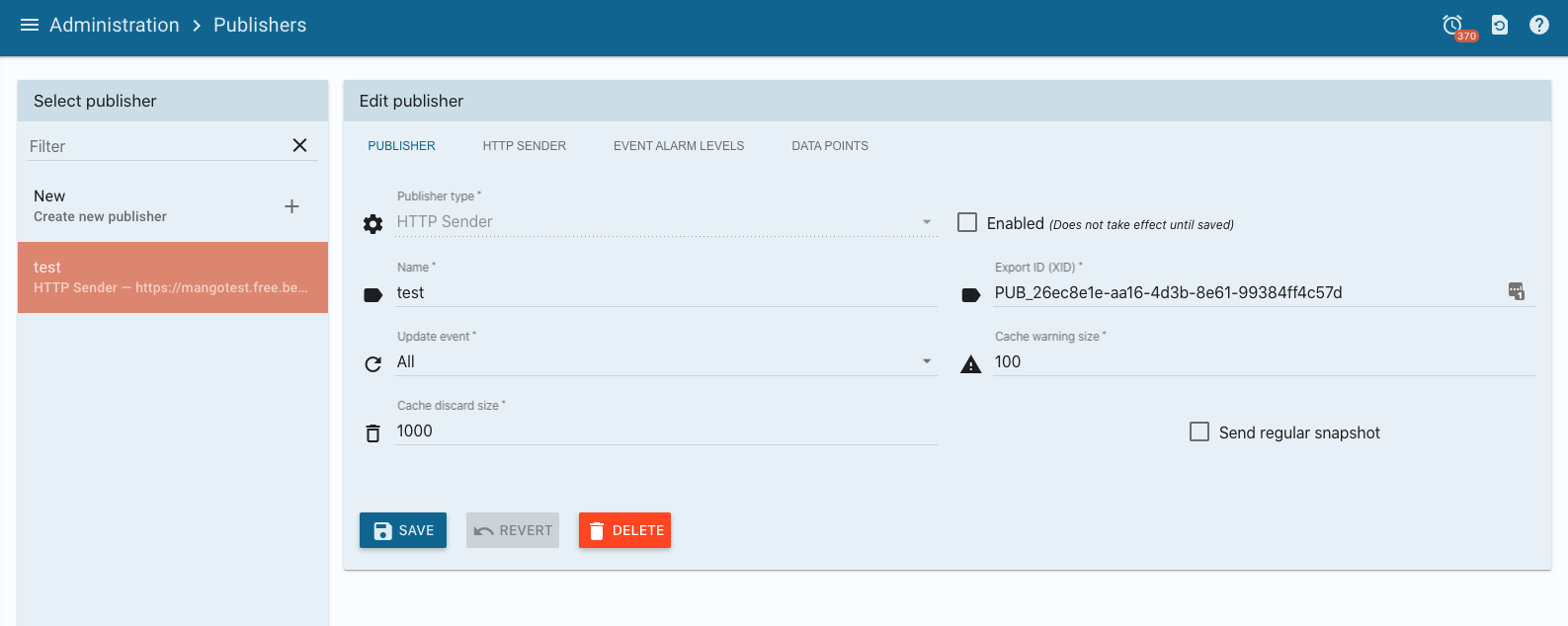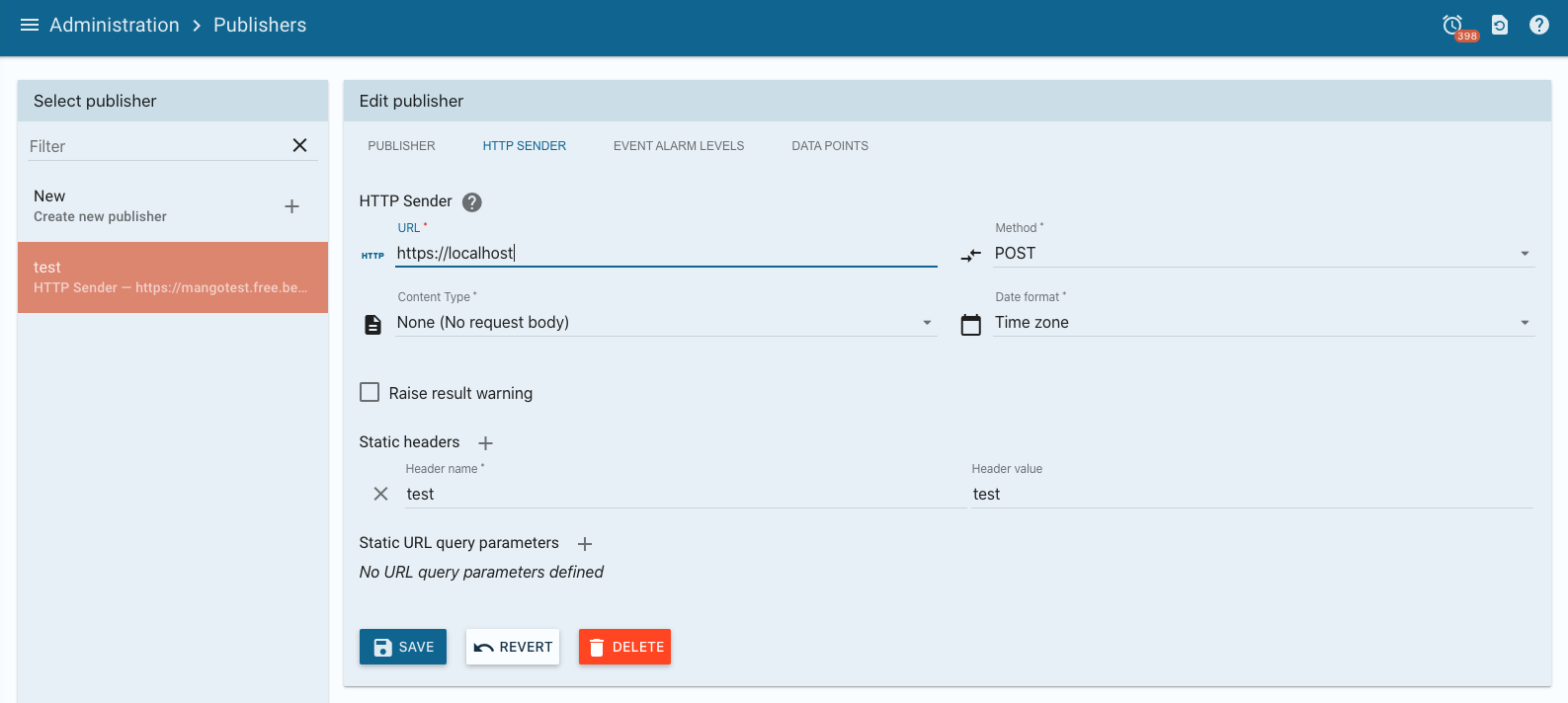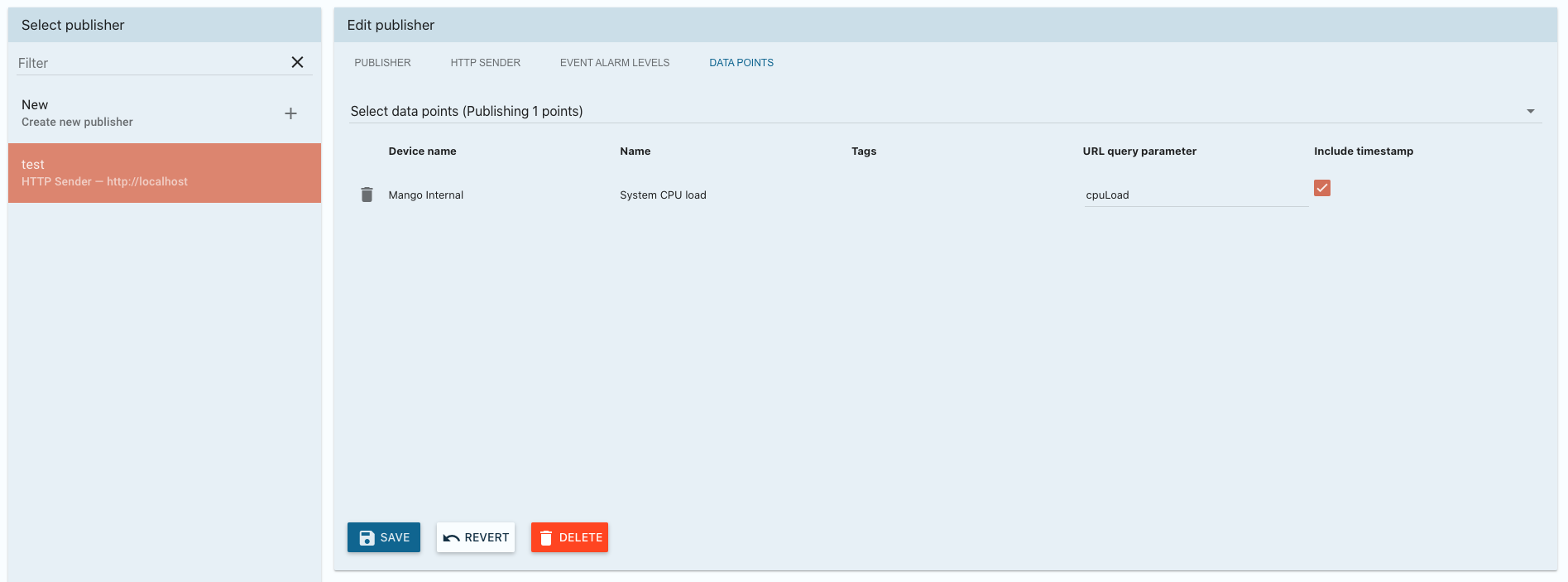The HTTP Sender publisher is used to send data point values to an external URL, the data can be sent every time the datapoint change, or you can send regular snapshots, defining a time period.
The data can be sent as url query parameters or JSON (only with POST request):
Text:
jvm=155.0%402020-10-05T16%3A25%3A49.774-04%3A30&point=0%402020-10-05T16%3A25%3A49.774-04%3A30
JSON:
{"jvm":"165.0@2020-10-05T16:19:19.774-04:30","point":"1@2020-10-05T16:19:19.774-04:30"}
To create a new publisher, go to “Administration > Publishers”, click on New and select HTTP Sender in the Publisher type select:

- Update event: Defines when you want to send the data points values. You can choose between All, Changes only, Logged only, and None.
- Cache warning size: Raises a warning event when there are x amount of point values queued to be published
- Cache discard size: Starts discarding point values that once the queue reaches this size
- Send regular snapshots: Shows Snapshot send period where you can define how often you want to send the data point values.
In the HTTP SENDER tab you can configure the next parameters:

- URL: it is the url where you want to send the data.
- Method: The request method that you want to use. You can select between GET and POST.
- Content type: You can define if you want to send the data point values through query parameters (None) or JSON. JSON option only works with the POST request, because the GET request doesn’t have a body where you can send the JSON data.
- Date format: If you include the timestamp (more about this below), this date format defines the format of the data point timestamp.
- Raise result warning: Raise a warning event when the HTTP response status is non successful (i.e. 4xx or 5xx).
- Static headers: You can set static headers, like “Authorization”.
- Static URL query parameters: You can add custom static parameters to the query params
In the DATA POINTS tab you can add the data points that you want to publish:

- URL query parameter: It is the identifier that you define for the point in the JSON or query parameter content type.
- Include timestamp: You can define y you want to include the data point timestamp, you can define the date format in the HTTP SENDER tab.